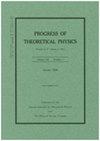Explosive Nucleosynthesis in Magnetohydrodynamical Jets from Collapsars. II — Heavy-Element Nucleosynthesis of s, p, r-Processes —
引用次数: 23
Abstract
We investigate the nucleosynthesis in a massive star of 70 Mwith solar metallicity in the main sequence stage. The helium core mass after hydrogen burning corresponds to 32 M� . Nucleosynthesis calculations have been performed during the stellar evolution and the jetlike supernova explosion of a collapsar model. We focus on the production of elements heavier than iron group nuclei. Nucleosynthesis calculations have been accomplished consistently from hydrostatic to dynamic stages by using large nuclear reaction networks, where the weak s-, p-, and r-processes are taken into account. We confirm that s-elements of 60 90 are produced via photodisintegrations of seed s-elements. However, the produced p-elements are disintegrated in later stages except for 180 Ta. In the explosive nucleosynthesis, elements of 90 50) are overproduced via the p-process because of the low peak temperatures in the oxygen- and neon-rich layers. Compared with the previous study of r-process nucleosynthesis calculations in the collapsar model of 40 Mby Fujimoto et al. (S. Fujimoto, M. Hashimoto, K. Kotake and S. Yamada, Astrophys. J. 656 (2007), 382; S. Fujimoto, N. Nishimura and M. Hashimoto, Astrophys. J. 680 (2008), 1350), our jet model cannot contribute to the third peak of the solar r-elements and intermediate p-elements, which have been much produced because of the distribution of the lowest part of electron fraction in the ejecta. Averaging the overproduction factors over the progenitor masses with the use of Salpeter's IMF, we suggest that the 70 Mstar could contribute to the solar weak s-elements of 60坍缩形成的磁流体动力射流中的爆炸核合成。重元素s, p, r的核合成过程
我们研究了一颗质量为70 m、金属丰度为太阳的大质量恒星在主序段的核合成过程。氢燃烧后的氦核质量为32 μ M。核合成计算已经在恒星演化和射流超新星爆炸的一个坍缩模型中进行了。我们专注于生产比铁基团核重的元素。核合成计算通过使用大型核反应网络从流体静力到动态阶段一致地完成,其中弱s-, p-和r-过程被考虑在内。我们证实60 - 90的s元素是通过种子s元素的光分解产生的。然而,除了180 Ta外,产生的p元素都在后期分解。在爆炸核合成中,由于富氧层和富氖层的峰值温度较低,通过p过程过量产生90 - 50)元素。与先前研究的r-过程核合成计算在40 Mby Fujimoto等人的坍缩模型(S. Fujimoto, M. Hashimoto, K. Kotake和S. Yamada, Astrophys.)。[j] (2007), 38 (1);S. Fujimoto, N. Nishimura和M. Hashimoto,天体物理学。J. 680(2008), 1350),我们的喷射模型不能对太阳r元素和中间p元素的第三峰做出贡献,这些元素由于喷射物中电子分数最低部分的分布而大量产生。利用Salpeter’s IMF对其生产过剩因子进行平均,我们认为70 Mstar可能产生60
本文章由计算机程序翻译,如有差异,请以英文原文为准。
求助全文
约1分钟内获得全文
求助全文
联系我们:info@booksci.cn
Book学术提供免费学术资源搜索服务,方便国内外学者检索中英文文献。致力于提供最便捷和优质的服务体验。
Copyright © 2023 布克学术 All rights reserved.
京ICP备2023020795号-1
 京公网安备 11010802042870号
京公网安备 11010802042870号
京ICP备2023020795号-1

Book学术文献互助群
群 号:604180095


 求助内容:
求助内容: 应助结果提醒方式:
应助结果提醒方式:
